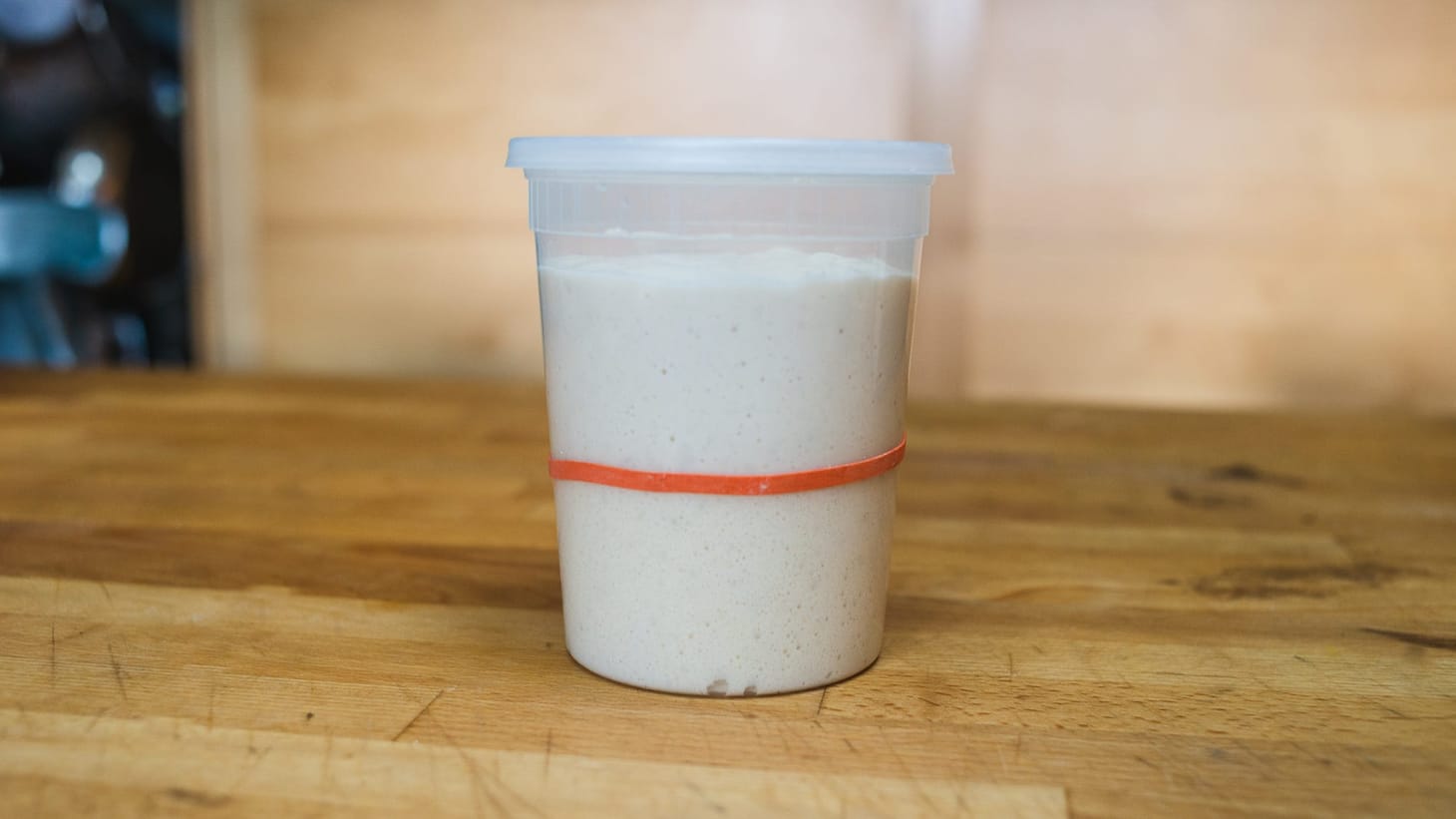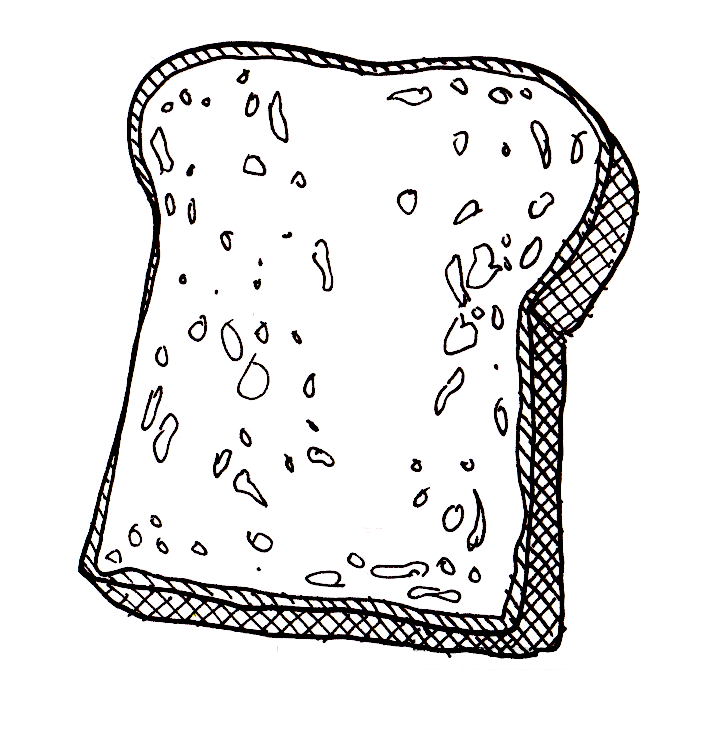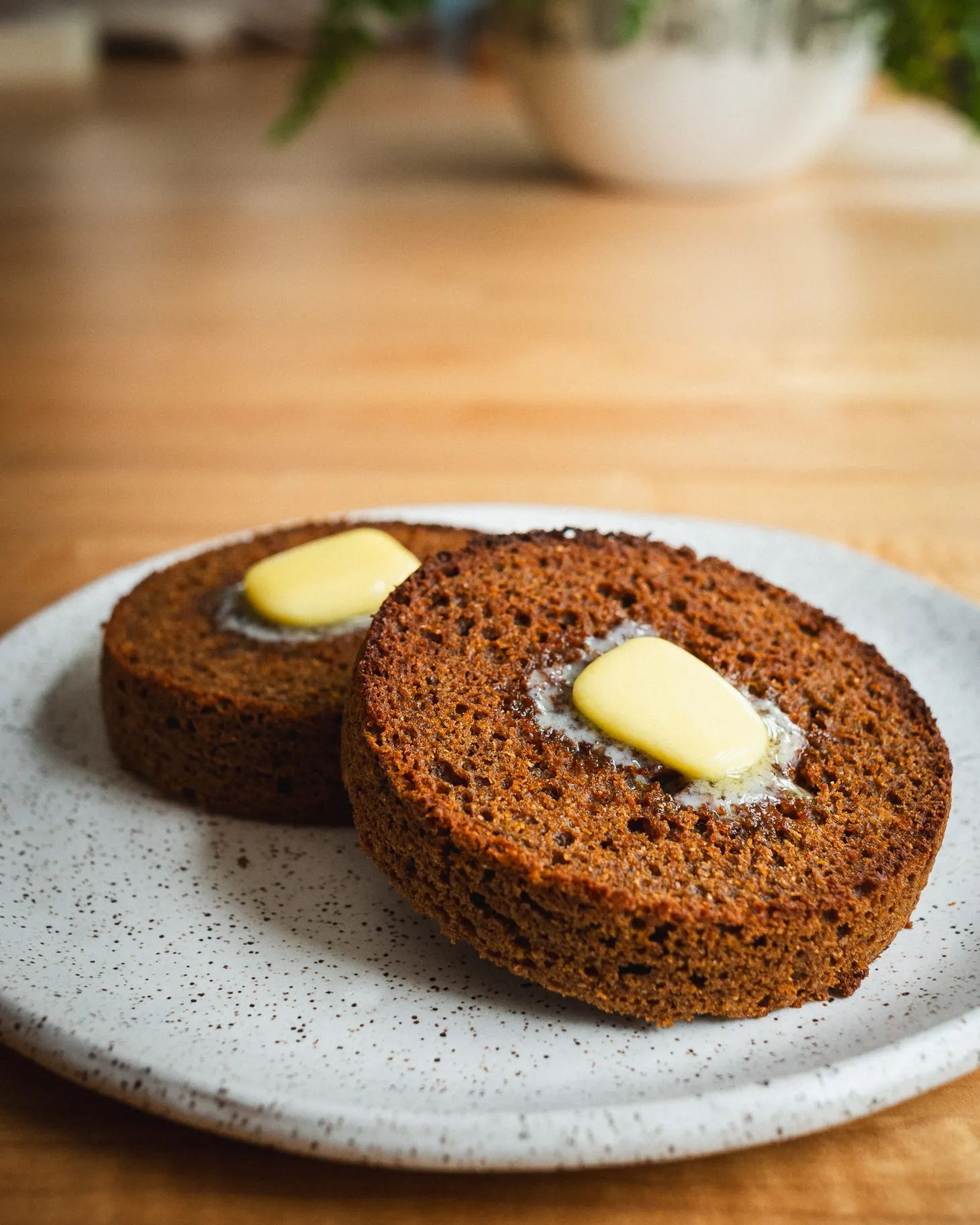Recipe: Care and Maintenance of a Sourdough Starter

Table of Contents
Maintaining a sourdough starter, the basics

To keep my starter healthy and ready for baking, I refresh it using a 2:2:1 flour/water/starter ratio, proof it at room temperature until it has doubled in volume, then move it to the fridge, where it slows down and remains ready to bake with for up to a week. (If you aren’t baking with your starter, you can forget about it in the fridge for at least a month. But keep in mind that the longer you leave it there, the more twice-daily room temperature feedings it will need before it’s happy again.)
Left at room temperature longer, the starter would eventually triple in volume over 8 to 12 hours before collapsing and needing refreshing again. Arresting this process by cooling it down—before it has exhausted all the nutrition in the flour—is the secret to long-term viability in the fridge.
Note that I use only white flour here, another key to success with this particular approach: The somewhat limited nutrient content of white flour keeps the starter from overproofing while it’s in the fridge. Save the whole grain flour for the bread, or for if and when your starter seems to be flagging (in which case I’d recommend using 30% rye flour).
Finally, the method below is only for a healthy, mature starter; if you use it with one that is immature and/or weak, it won’t work, and you’ll likely only compound the problem by doing so (slowing down an already slow starter will just weaken it further).
One key indicator of maturity is that it does what it is supposed to do at the end of step 1, provided you follow the instructions as written (i.e., it doubles in volume in 3 to 6 hours time). If it doesn’t, it isn’t there yet, and you should instead keep refreshing it at room temperature twice a day, using the same ratio, but at a smaller scale—say 50g flour, 50g water, 25g starter—to conserve flour. (By the way, if you are here because you got a batch of my Fermented Flakes™ dried sourdough starter, this means you.)
Care and Maintenance of a Mature Sourdough Starter
This method works whether you are baking on a regular basis or only once in awhile, but it is scaled for regular use. If you don’t bake often, you’ll probably want to scale it down by 1/3 (i.e., 50g flour, 50g water, 25g starter), so as to not waste flour. If your kitchen is above 85˚F, use cool (65˚F) water. If it’s below 70˚F, use warm (80˚F) water.
150 grams high-protein AP or bread flour
150 grams water, 75˚F
75 grams mature starter
- Combine flour, water, and starter (return remaining starter to fridge as a backup in case of disaster) in bowl and stir until uniform. Transfer to clean, tall, narrow, & straight-sided container and cover (loosely if using mason jar). Mark starting level with rubber band or marker. Proof at room temperature until doubled in volume, 3 to 6 hours.
- Transfer to refrigerator and store for up to 14 days before refreshing again. (Cold-stored levain is best used for baking within 10 days.)
wordloaf Newsletter
Join the newsletter to receive the latest updates in your inbox.




